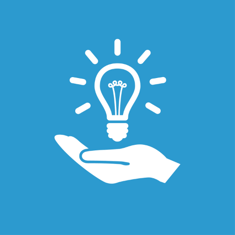
It’s been reported that nearly 1/3 of the global population believe in reducing consumption and are encouraging others to buy from socially and environmentally responsible companies.* People want their actions and their spending to have a positive impact. They want to make the “right” choice, the “healthy” choice and the “feel good about yourself” choice.
But when it comes to energy efficiency, it’s seemingly still difficult to connect with customers. It’s a newer market than the selling of “green” products. It’s also more remote, less tangible and complex.
We need to transition customers from viewing their energy consumption as an out-of-their-control, mandated cost to a controlled and responsible way of living. How do we get them to act, and to influence like the sustainable consumer?
This week we’re focused on the power of perfectly timed, prescriptive solutions – a clear set of actions to get customers involved.
Utility Programs:
It is terrific that most utilities offer a suite of programs and incentives to help customers live and work more efficiently. It’s even proven that satisfaction significantly increases when customers are familiar with their utilities' E.E. programs.**
However, we need to communicate these programs in a way that does not overwhelm the customer. We need to simplify this seemingly difficult task of making homes and businesses run efficiently by giving them a clear path of where to start and what to do next.
While conducting our own qualitative research on the motivations of the energy customer, we repeatedly heard, “I just don’t know what to improve” and “I don’t know where to start.”
While there are many elements to effectively reaching customers (Six Trends to Mold Successful E.E. Marketing), this idea of giving people a roadmap is one of the most crucial.
Think about it – when the customer is at the point of thinking, “where do I start?” you’ve already captured their interest! They are wanting and willing to make changes, but if it seems too complex and they don’t know where to start, their interest and desire to move forward will dissipate.
Four solutions to consider:
- Create a general roadmap engaging the customer on what the general “process” looks like for increasing the efficiency of the average home. This can help customers prioritize the programs, and understand them in a holistic, useful way. (This should be done for small business customers and large C&I.)
- Make the process easier and less intimidating for customers just starting out – provide an online home energy audit as the first step. Use this online tool to engage customers on the smaller, more basic improvements they can make to their home. Then, use this data to provide customers prescriptive solutions and the most relevant next steps to an efficient home and/or business.
- When it comes to your In-Home and/or Business Energy Audit, make sure the results inspire action and not a feeling of “I don’t have time for ALL that!” Give your customer a prioritized list of 3-5 actions to take. (Not 12!)
- Leverage your data to message customers based on what programs they have either already participated in, what they should do next or where they need to start. If they’re hit with too many programs or offerings at once, they will not be able to navigate which are actually relevant to them.
Lighting:
The task of screwing in a light bulb is so simple… Why is the shopping experience so incredibly overwhelming?
While the options are seemingly endless for this commodity product, consumers are just hoping they remembered to look at the needed bulb size before leaving the house… Otherwise, they have to come back. (And who has time for that?)
We know the technology and benefits of the right lighting are so incredibly important. Do consumers know these benefits? How can we translate your products to be more than size and lumens?
Are you being prescriptive with your products in terms the consumer can understand?
Three solutions to consider:
- Capture a broader interest by explaining your products in terms of room and correlating activities. Which light is best for applying makeup? (Women, you hear me.) Which light is the warmest and most natural for a newborn’s room? Which light is best for your reading lamp? Which light is best in a room where the family watches TV every night?
- Promote the “right” light near the “right” products. On the makeup aisle? With the baby products?
- Partner with brands or retailers to promote this aspect of your product, making it stand out from all the others.
So, why does a marketing firm care about energy efficiency, utility programs and light bulbs?
We’re focused on building brands that build a sustainable future, and energy is at the very core of our mission. To be successful, we continually conduct research on the E.E. customer. In a few weeks, we’ll be releasing our newest research on the American homeowner. After surveying 1,300 participants, we've gained valuable insight into the consumer relationship with energy efficiency, consumption, conservation practices, smart technology and their outlook on the future. In addition, we're uncovering the most effective and trusted channels to engage with people on these issues. Our objective in gaining a deeper understanding of this relationship is to inspire our clients' customers to think, act and buy more sustainably.
Interested in learning more? Contact Lauren Bell.
Lauren Bell / Engagement Manager / lbell@ksvc.com / 802.862.8261
*BBMG & GlobeScan. International Markets Study. 2014.
**J.D. Power. Customer Impact Report: Energy Efficiency Programs and Awareness. 2014.
